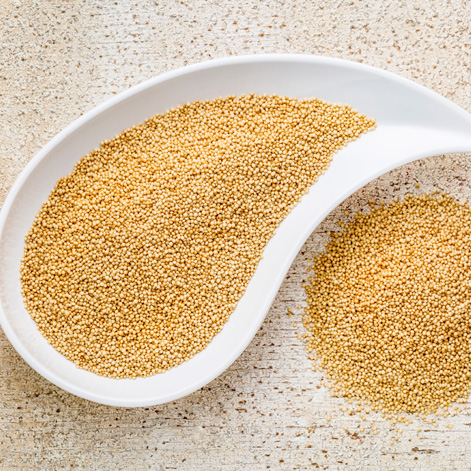Amaranth is a plant that is native to Central America, characterized by its edible seeds, and is often consumed in the same way as grain. Amaranth is a plant with various species, the genus Amaranthus, in fact, includes about 60 types, even if only three are considered good seed producers: the Caudatus, the Cruentus, and the Hypochondriacus.
Origin
The diffusion of amaranth is extremely varied. We can trace it back to the 1700s in Europe, where it was used as an ornamental plant, but also to Africa and Asia, where, a hundred years later, it was essentially used for food.
It is thought, however, that a variety of amaranth was already known at the time of the ancient Greeks because myths tell of goddesses that loved being venerated by humans, precisely with garlands made from this plant.
Similarly, it is thought that Romans attributed supernatural powers to amaranth, which served to ward off envy and misfortune. In its area of origin, furthermore, the plant was highly esteemed. Aztecs called amaranth, “The grain of the Gods”, because of the energizing properties of the seeds, and its importance in their religious rituals. The Maya, instead, particularly appreciated its healing power, so much so that they gave amaranth the name, “kiwicha,” that is, the Little Giant.
WHY IT SHOULD BE EATEN
Rich in calcium, but also in phosphorus, magnesium, iron, starches, and, above all, easily assimilable protein, amaranth also contains a significant amount of lysine, an essential amino acid that is lacking in most other grains. And that's not all. Amaranth is also a good source of fiber, and a good antioxidant, which works to prevent cardiovascular disease and hypertension.

It is a tiny seed that is light in color, its sweet and pleasant taste is vaguely reminiscent of hazelnuts, in fact, in cooking it lends itself to sweet preparations.
However, amaranth is a versatile ingredient. It can be eaten with vegetables and in soups made of grains. Its seeds, once puffed, may be added to milk or yogurt, or used in the preparation of snacks for children.
When ground into flour, it is also an excellent base for the meals of newborns. Amaranth should be boiled for about 20 minutes, in a quantity of water equal to 3 times that of the seeds. For example, to prepare 300 grams of amaranth, you will need 900 milliliters of water. In cooking, it tends to come together, assuming a slightly gelatinous consistency. It can, therefore, be mixed with another grain, such as rice, or with legumes.
Before cooking amaranth, it is best to rinse it for several seconds under running water and, if desired, lightly brown it in a frying pan with a little oil. Bring a pot of water, with a pinch of salt, to the boil, add the amaranth, and cook for 20 minutes. Allow it to sit for 10 minutes, before adding a flavoring accompaniment, such as vegetables. You can also sauté the amaranth and its flavoring for a few minutes in a frying pan, in order to give it more color and greater crunch.

Because the Aztecs believed that amaranth was a sacred plant, the Christian conqueror, Cortez, had all the amaranth fields destroyed, and strictly forbade its cultivation, threatening offenders with torture and even death sentences. These extreme measures caused the demise of Amaranth for many centuries.




 E-Shop
E-Shop

 Back
Back








